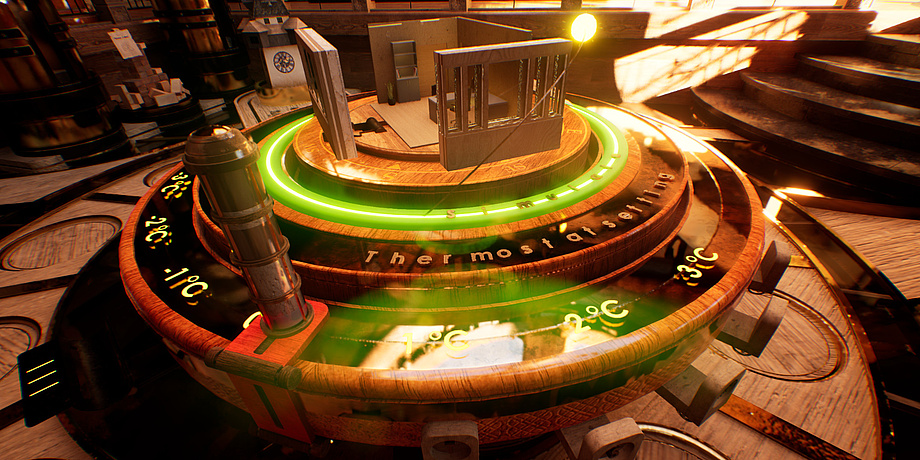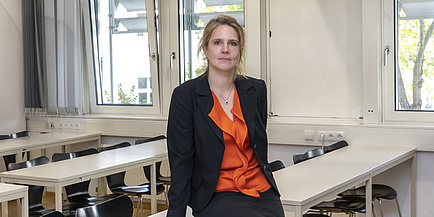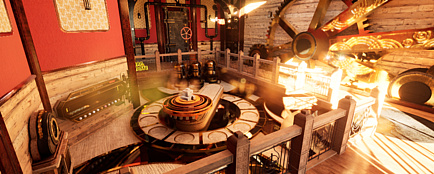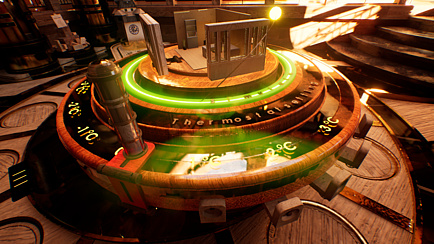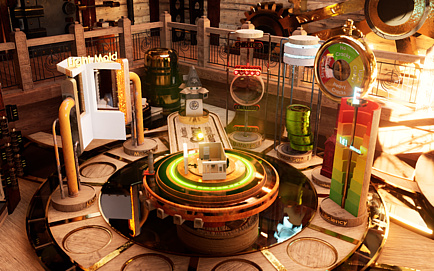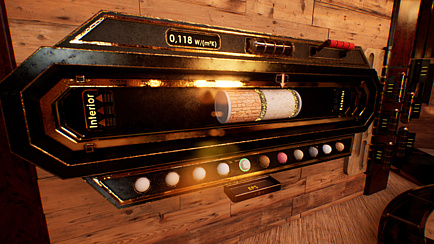updated on July 9 2024
Next-generation energy services are designed to help a building’s end users understand and visualise the benefits of new energy-efficient technologies or thermal refurbishment measures. This includes the control of heating and cooling, lighting and ventilation. Effectively transferring this understanding to students through educational content as well can lead to more sustainable designs by future engineers. To achieve these goals, an interdisciplinary group of researchers from Graz University of Technology worked together in the project BEYOND. The group included members from the Institute for Building Physics, Services and Construction, the Institute of Interactive Systems and Data Science, and the Institute of Software Technology. The result is a virtual reality educational game in which users can change the physical parameters of a building and experience the effects of this change in real time. This enables them to design an energy-efficient building at realistic costs or to improve the energy efficiency of an existing one. The project's focus also aligns with TU Graz's ongoing sustainability initiatives, including its goal to be carbon neutral by 2030.
Visual and acoustic feedback
In the BEYOND game, participants change the properties of a room in a building within a virtual reality environment and receive educational guidance through visual signals, notes and an educational narrator. This is supplemented by haptic feedback through the controllers and audio hints on the positive and negative effects of these changes. When it comes to insulating a wall, for example, it is not only the wall structure and materials used that are relevant, but also the costs incurred. Having larger windows, for example, provides more daylight, which has been shown to generally have a positive effect on people indoors. But glazing components typically have higher heat transfer coefficients leading to greater energy losses during the colder periods of the year compared to an insulated façade. Conversely, glazing can also harvest solar gains, which can effectively turn windows into radiators. This has advantages in winter, but can also lead to overheating in summer. Understanding the competing pros and cons occurring within a building and making them visual, and even visceral, to the building end-users is one of the great attributes of Beyond.
The clear feedback helps users to better understand the advantages and disadvantages of different building measures. This makes this application valuable for architects, planners and owners, but also for end users and students, who can use BEYOND as an interactive teaching tool to better understand the topics of building physics and building behaviour. Following the concept of escape room games, players must complete various quests in a virtual building laboratory to unlock the door and exit the laboratory. The quests consist of tasks including altering different parameters, like a building's location and orientation or changing the time of day and year. Other tasks are assembling different types of walls with various structural materials, and optimizing the building for energy efficiency, costs, and insulation. Throughout the quests, the players can interactively analyse the impact of their decisions, such as the change in energy consumption with increased or decreased heating or cooling setpoints.
Combination of three technologies
The BEYOND project is unique in that it combines three technologies and methods. In addition to a virtual reality environment, machine learning and building performance simulation are used to process, visualise and forecast changes in the building data. For this purpose, machine learning surrogate models are trained using high-fidelity physics-based models. These computationally inexpensive surrogate models enable online simulation to visualize the actual effects of planning interventions in real-time. The third element is the integration of IoT platforms and sensor networks for bidirectional real-time communication between the building and its users.
Building stock largely inefficient
To combine these technologies, three core research teams worked together on an interdisciplinary basis. The team at the Institute of Building Physics, Services and Construction led by Christina Hopfe dealt with the building energy simulations and the game’s educational content. A team from Game Lab Graz at the Institute of Interactive Systems and Data Science with Johanna Pirker at the helm created the virtual reality game, while a team at the Institute of Software Technology led by Gerald Schweiger developed machine learning models and provided a platform for accessing the IoT data. TU Graz spin-off DiLT Analytics was responsible for deployment and IoT integration, while EAM Systems installed the hardware and sensors. The project was funded by the Austrian Research Promotion Agency (FFG) as part of the “City of the Future” programme.
“The BEYOND project deals with an interdisciplinary topic that is emerging at the edge of building physics, data science and virtual reality,” says Christina Hopfe. “It is a topical area for research which is underpinned by the energy crisis, the climate crisis and the rapidly changing demands on our energy systems. Energy-efficient buildings play an important role on the path to climate neutrality, as the building stock in the EU is still energy-intensive and predominantly inefficient – it is responsible for 40% of final energy consumption and around 36% of CO2 emissions. For the first time - nationally and internationally - BEYOND enables the connection of VR technology with real buildings, as well as real-time communication and simulation. This allows direct virtual interaction with real buildings and their energy services.”
From Christina Hopfe’s point of view, this awareness is of central importance to changing energy-related behaviour, especially one’s own, and reducing profligate energy consumption – and thus for achieving the climate targets. She explains further: “The EU aims to be climate neutral by 2050, and this means transforming the entire built environment to achieve net-zero greenhouse gas emissions. Renewable energy is part of that solution, but energy services such as predictive maintenance, demand-side management or model-predictive control have an important role to play in reducing the energy demand of buildings whilst transforming buildings into active, intelligent players in higher-level energy systems.”
This project is part of the research center Graz Center of Sustainable Construction as well as the Fields of Expertise Information, Communication and Computing, and Sustainable Systems, two of the university’s five scientific research foci.
Would you like to receive the latest stories, news, research stories, interviews or blog posts from TU Graz directly on your smartphone or in your email inbox? Subscribe to the TU Graz Telegram newsletter free of charge.
